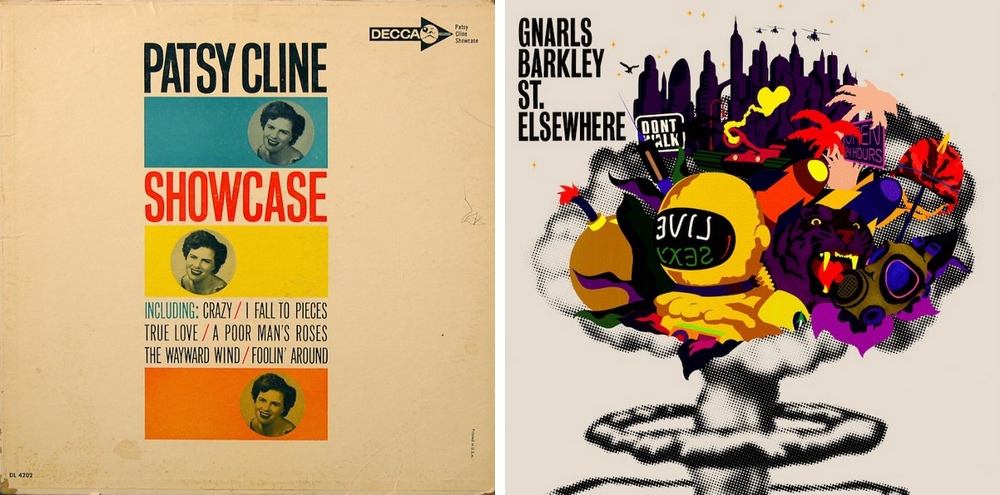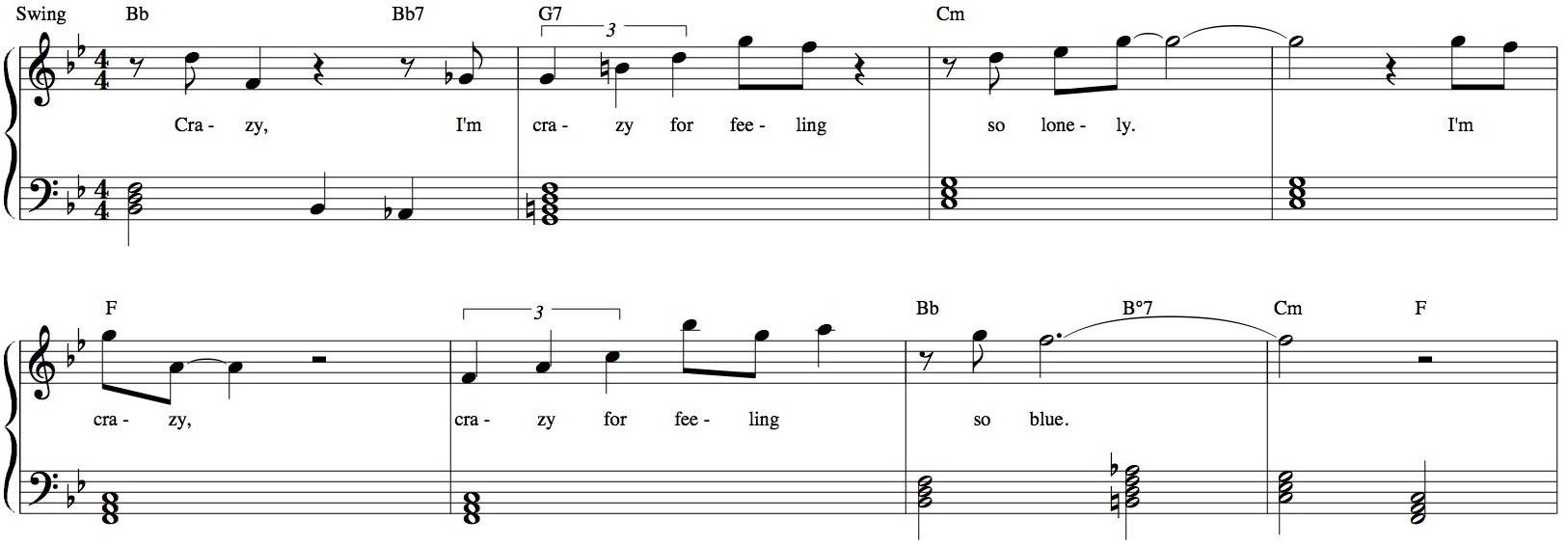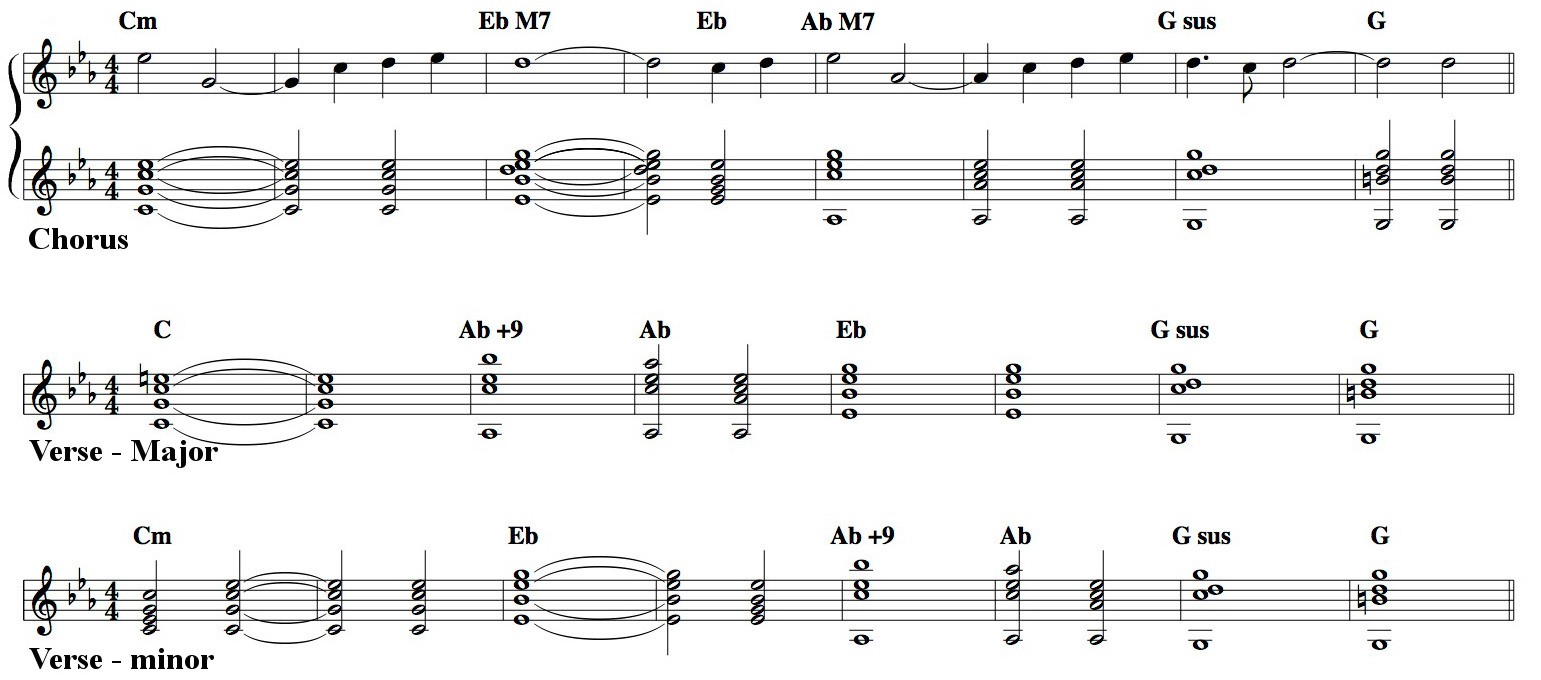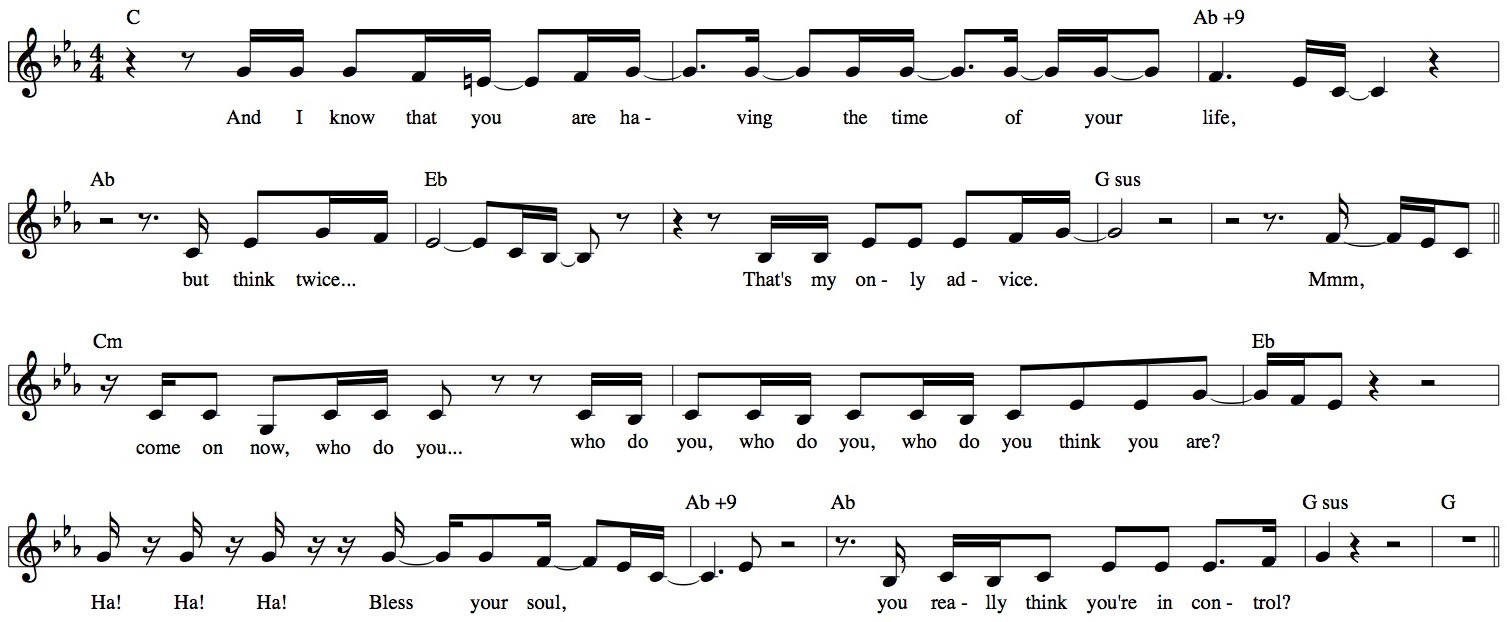Crazy
Patsy Cline (‘61) & Gnarls Barkley (‘06)


As a teenager, Patsy Cline dropped out of high school to help support her family, and worked her way up from local radio performances and nightclubs, to the Grand Ole Opry and a contract with a Decca subsidiary. At age 29, In January of 1961 she recorded the smash hit “I Fall To Pieces” under legendary Nashville producer Owen Bradley, which hit #1 on the country charts and broke through to #12 on the pop charts.
In June of that year, she was involved in a car accident which nearly killed her, and promotion was put on hold while she recovered in the hospital.
Now needing to pick up where she left off, she recorded Willie Nelson and Oliver English’s “Crazy” in mid-August. Not being fond of Nelson’s singing style (and still struggling with the physical effects of the crash), she put her own spin on the vocal delivery, and the end result would become her biggest hit and signature song.
Modern readers may be interested in the barriers she broke down for female artists in Nashville and beyond. She was, by most accounts, a total badass who influenced her own career, commanded respect from the male-dominated country music scene, wore whatever tf she wanted, and held her own when it came to drinkin’.
Cline would enjoy only a few short years of this newfound success; she recorded just one more proper album between a nonstop touring schedule, before — like Holly, Valens and The Big Bopper just a few years prior — she was lost to an airplane crash in March of 1963.
Willie Nelson’s version of “Crazy” is a little heavier on the country elements, particular the lovely pedal steel work. Cline’s version adds the smooth vocal harmonies of The Jordanaires, and the band wisely leaves a ton of space for her soaring-but-relaxed vocals.
Like The Supremes’ “Baby Love”, this song doesn’t fit super cleanly into modern pop songform terms; its structure is basically determined by the chord progression. The Verse is divided into two halves; after the Bridge, the second half is replaced with the Chorus.

Probably one of the reasons this song managed to break through to the pop charts was the masterful lyric setting and hookiness of the vocal part.

Within the first four measures, the vocal line stretches over an octave, and the melodic lines are written to emphasize the most salient and emotionally charged words in the lyrics. First with the unexpected falling sixth on “Crazy” (followed by a rest to let the audience absorb); then the fluttering “Feeling” at the top of a V7 of ii run (which also reinforces the fancy mode change); and finally settling on the high G for “Lonely”… which decrescendos into the chilly plate reverb of loneliness.
Not only is this a fantastic lyric setting, but Cline’s delivery is just stupidly excellent; pitched right in the middle of 50s country and pop styles. Her hiccups when entering higher registers function both in the context of an Elvis/Buddy Holly yelp and as a nod to a light yodel. Playing with the slow swing feel of the track, she stretches rhythms all over the place, adding a completely personal spin to the lead sheet. Particularly in the chorus, this is the sort of vocal line which a transcriber will usually infer, rather than notate directly.¹

The chorus’ descending lines reflect the wobbling holding pattern one falls into when salving a broken heart at odd hours in the bar. Our narrator starts and ends in exactly the same place: Crazy. Lonely. Blue. And still in love with the subject of the song… despite knowing better. Sometimes you just can’t help it.
Here’s one last item about the way this song was recorded: Owing to her ribs still healing from the accident, Patsy was not able to nail this vocal track on the first day of the session. Instead, the band laid down the backing tracks on the studio’s new 4-track tape, and she returned a week later to record her vocals on top.
If you’re ever in a conversation where some fussbudget is complaining about modern music because “producers just bring in vocalists to sing on tracks”… perhaps mention that this song was basically recorded in this manner.
CeeLo Green and Danger Mouse met one another in Atlanta in the late 90s. They worked together for a few one-offs, and eventually had enough material to release an album. In interviews they describe their process as not overly-considered; the name Gnarls Barkley was picked on a whim and they stuck with it.
Both of these guys stay on the grind. Danger Mouse has written and produced for his own projects, collaborations, and a dozen other artists since accidentally grabbing the spotlight with The Grey Album in 2004, amidst an ongoing, media-wide discussion about copyright laws. He’s written and produced tracks for several #1 albums (Recently, “River Lea” on Adele’s “25”).
CeeLo got his start in the realm of Southern Hip Hop with Goodie Mob before branching into a successful solo career — all while guesting on other artists’ tracks, doing occasional backup vocal sessions, some acting and voiceover work, and a ton of live appearances, including a stint as a judge over 4 seasons of The Voice.²

“Crazy” is an interesting mix of styles; I’d probably shorthand it as “a soul song with hip hop production.” The primary sample for this song comes from the soundtrack of a 1968 Spaghetti Western titled “Preparati La Bara!” (Dubbed in English as “Django, Prepare a Coffin”), scored by brothers Gianfranco & Gian Piero Reverberi, in the Morricone style.
(Note the Major B section). The way this sample is used is well-considered: by avoiding the trumpet and focusing primarily on the choir, it doesn’t sound overtly Spaghetti Western; it instead takes on a vibe somewhere between gospel and the ridiculous (and underappreciated) Beautiful Music genre. There’s some audible timestreching and editing artifacts, which contribute to the overall gritty feel of the song, as do the slightly out-of-tune vocal harmonies.
The rhythm is held down by the sample’s picked electric bass, and drums in the Boom Bap style. The chorus throws in the sample’s unison string line, and the choir shifts dramatically from mp “Mmm”s to ff “Aaah”s — but aside from this, the backing track’s dynamics and production remain steady: punchy, thick, and saturated in grimy, rough compression.
If you’re a musician, your ears likely perked up at the Picardy 3rd. For the layperson, this is when a song in a minor key resolves instead to the Major tonic — in this case, the song is in C minor and the verse starts on a C Major.
Let’s take a minute to check out this chord progression in detail:

Pop tunes rarely use this turnaround, so immediately this song sounds unusual in the radio landscape. Danger Mouse also places it at the beginning of the verse, the rest of which is in C minor; creating an odd and highly effective neither-here-nor-there feeling to the songform until the G to Cm turnaround on the verse repeat.
This unusual chord progression is one of the reasons this song doesn’t feel lacking in variety, even though there are only verses and choruses (with no prechoruses or a bridge). The other is the fluid pacing and nuance of CeeLo’s vocal part, which contrasts tight rhythmic control in the verses and wild slides in the choruses.
During the verses, CeeLo expertly nudges the phrases’ dynamics to cover all the grey area inside a simmering Mezzo Forte. Coupled with the choral sample and driving bass, the vocals here come off as slightly ominous at times — the lyrics are open to interpenetration, but by using the personal pronouns “I” and “You”, take on a more direct and pointed linguistic tone.
The verses are full of tricky syncopation and complicated rhythms:

Each verse details a different perspective on craziness. The first relates the personal experience of entering a crazy state; the second is an outside perspective of someone in a crazy state — and can be read either as direct commentary, or an outside perspective on the narrator. In the third, the narrator takes a step backward, drawing a line from the admiration of “crazy” performers to a life spent chasing these same experiences. The chorus’ pronouns change to tie in with each verse: first “Maybe I’m crazy,” then “I think you’re crazy,” and finally joining together into “We.”
In the decade since this song was released, the discourse surrounding mental health in popular culture has developed dramatically. Many support groups, authors, and social media campaigns are now dedicated to destigmatizing these issues, and many have embraced the Neurodiversity movement — which positions all people as existing in genetic variations of a single sort of mind (in opposition to the normal/crazy dichotomy).
Viewed in this modern context, Crazy’s lyrics remain quite fresh. To me, they sound like an author sussing out the fuzzy border between a manic episode and what psychologist Mihály Csíkszentmihályi calls the “flow” state — a fairly common experience, gently brushed with just a touch of crazy — though this is admittedly an over-reading.
None-the-less, weather we find ourselves crazy from an unrequited love, or in the throes of a Dionysian revelry… music and art remain safe spaces in which to explore and express these momentary lapses in sanity.
[1] These hiccups are emphasized in this live recording.
[2] FunFact! CeeLo has a backup vocal credit on TLC’s “Waterfalls”.